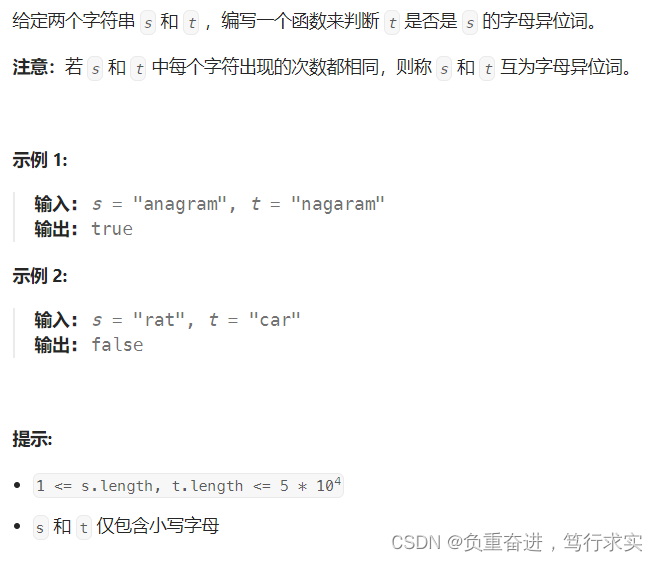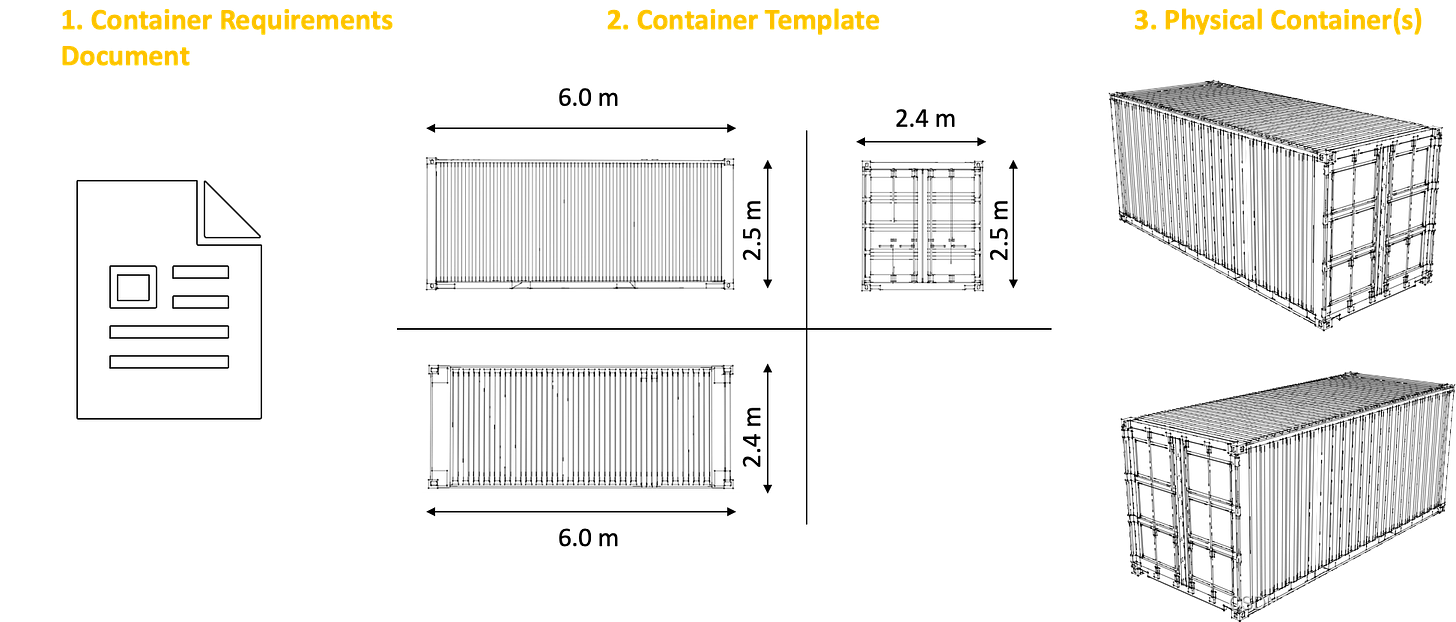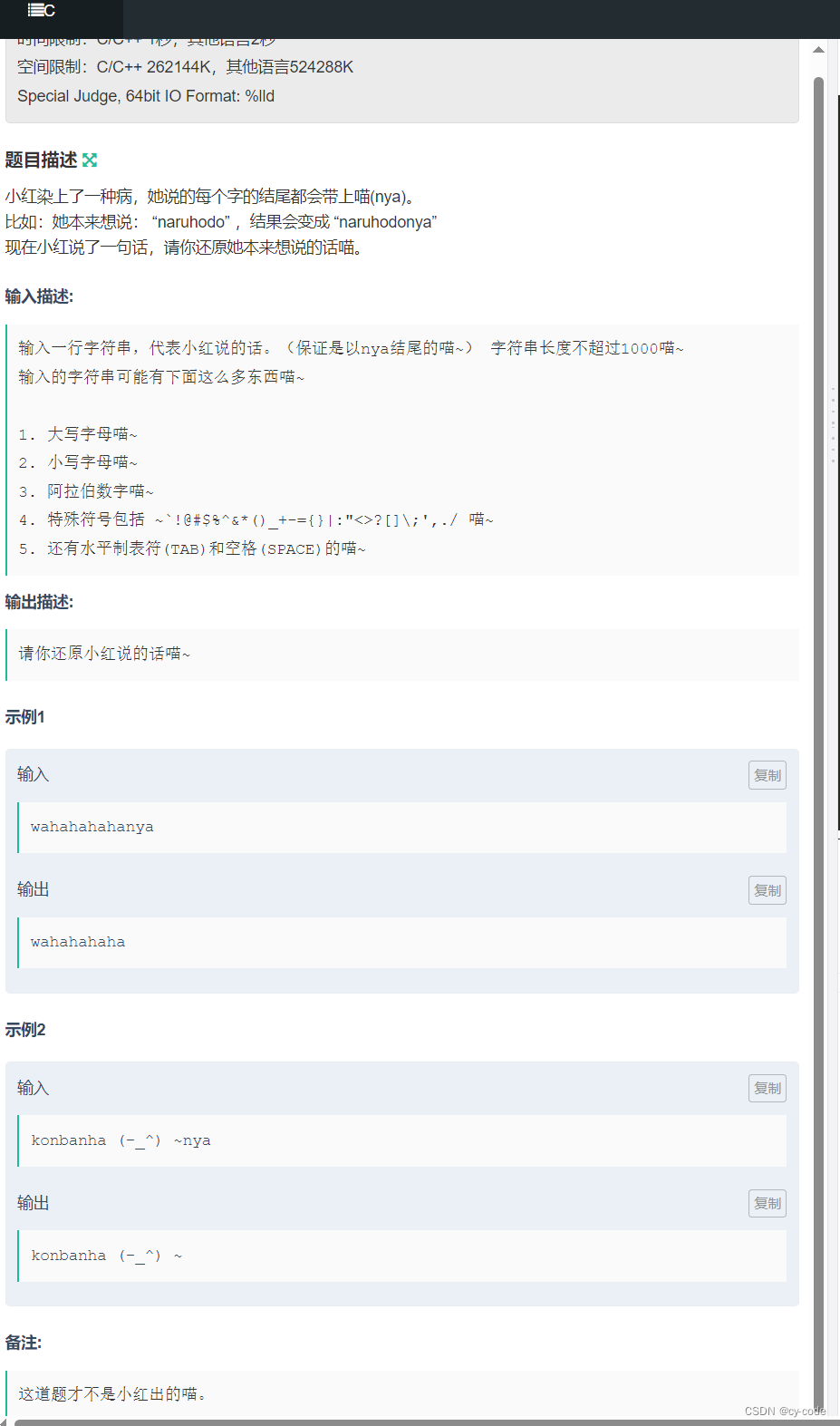单链表
题目链接:826. 单链表 - AcWing题库
思路:AcWing 826. 单链表---图解 - AcWing
需要注意的点在于理解ne[idx] = head,idx表示当前的点,意思是将当前的点链到头结点的后面,再将头结点链在当前idx的前面。
#include<bits/stdc++.h>
using namespace std;
const int N = 100010;
int head, e[N], ne[N], idx;
// 初始化
void init()
{
head = -1;
idx = 0;
}
// 在链表头插入一个数a
void insert_to_head(int a)
{
e[idx] = a;
ne[idx] = head;
head = idx ++ ;
}
void insert(int k,int a)
{
e[idx] = a;
ne[idx] = ne[k];
ne[k] = idx ++ ;
}
// 将头结点删除,需要保证头结点存在
void remove(int k)
{
ne[k] = ne[ne[k]];
}
int main(){
int m;
cin>>m;
init();
while(m--){
char a;
cin>>a;
int k,x;
if(a=='H'){
cin>>x;
insert_to_head(x);
}else if(a=='I'){
cin>>k>>x;
insert(k-1,x);
}else{
cin>>k;
if(!k) head = ne[head];
else remove(k-1);
}
}
for(int i=head;i!=-1;i=ne[i]) cout<<e[i]<<" ";
return 0;
}双链表
题目链接:827. 双链表 - AcWing题库
思路:这个博客写的可好AcWing 827. 双链表 - AcWing。
需要注意的地方在于r数组和l数组的含义。r[idx]表示的是idx的右边,l[idx]表示idx的左边,开始时初始化0的左边是1,1的右边是左,所以r[0] = 1,l[1] = 0。
#include<bits/stdc++.h>
using namespace std;
const int N = 100010;
int e[N], l[N], r[N], idx;
// 初始化
void init()
{
//0是左端点,1是右端点
r[0] = 1, l[1] = 0;
idx = 2;
}
// 在节点a的右边插入一个数x
void insert(int a, int x)
{
e[idx] = x;
l[idx] = a, r[idx] = r[a];
l[r[a]] = idx, r[a] = idx ++ ;
}
// 删除节点a
void remove(int a)
{
l[r[a]] = l[a];
r[l[a]] = r[a];
}
int main(){
int m;
cin>>m;
init();
while(m--){
string op;
cin>>op;
int k,x;
if(op[0] == 'L'){
cin>>x;
insert(0,x);
}else if(op[0] == 'R'){
cin>>x;
insert(l[1],x);
}else if(op[0] == 'D'){
cin>>k;
remove(k+1);
}else if(op[1] == 'L'){
cin>>k>>x;
insert(l[k+1],x);
}else{
cin>>k>>x;
insert(k+1,x);
}
}
for(int i=r[0];i!=1;i=r[i]){
cout<<e[i]<<" ";
}
return 0;
}
栈的应用
题目链接:3302. 表达式求值 - AcWing题库
思路:这个题解写的很好AcWing 3302. 表达式求值:多图讲解运算符优先级+详细代码注释 - AcWing。
主要的思路在符号栈上,符号栈内存储的符号优先级一定递增,即将进来的符号若小于当前栈顶优先级,则先对栈内高优先级符号进行运算,直到栈顶优先级低于待入栈符号优先级。
还需要注意的是,对于相同运算符来说,栈内的优先级大于栈外优先级,即遇到栈顶是一个加号,待入栈也是一个加号,先运算栈内加号,当栈为空或遇到更低优先级的符号时再将栈外加号入栈。
#include<bits/stdc++.h>
using namespace std;
stack<int> num;
stack<int> op;
unordered_map<char,int> h{{'+',1},{'-',1},{'*',2},{'/',2}};
void calc(){
char ops = op.top();
op.pop();
int b = num.top();
num.pop();
int a = num.top();
num.pop();
if(ops == '+') num.push(a+b);
if(ops == '-') num.push(a-b);
if(ops == '*') num.push(a*b);
if(ops == '/') num.push(a/b);
return;
}
int main(){
string s;
cin>>s;
for(int i=0;i<s.size();i++){
if(isdigit(s[i])){ //遇到数字的情况
int j = i;
int val = 0;
while(j<s.size()&&isdigit(s[j])){
val = val*10 + s[j] - '0';
j++;
}
i=j-1;
num.push(val);
}else{ //遇到字符的情况
if(s[i] == '(') op.push('(');
else if(s[i] == ')'){
while(op.top()!='('){
calc();
}
op.pop();
}else{
while(op.size() && h[op.top()] >= h[s[i]]){
calc();
}
op.push(s[i]);
}
}
}
while(op.size())
calc();
cout<<num.top()<<endl;
return 0;
}单调栈
题目链接:830. 单调栈 - AcWing题库
思路:维护一个数字单调递增的栈,若下一个待入栈数字小于栈顶时,持续出栈。感觉跟表达式求值中栈内优先级高于栈外优先级有点像,hh。
常见模型:找出每个数左边离它最近的比它大/小的数
int tt = 0;
for (int i = 1; i <= n; i ++ )
{
while (tt && check(stk[tt], i)) tt -- ;
stk[ ++ tt] = i;
}#include<bits/stdc++.h>
using namespace std;
const int N = 100010;
int a[N];
int main(){
int n;
cin>>n;
stack<int> stk;
for(int i=0;i<n;i++) cin>>a[i];
for(int i=0;i<n;i++){
while(stk.size()&&stk.top() >= a[i]) stk.pop();
if(stk.size()) cout<<stk.top()<<" ";
else cout<<-1<<" ";
stk.push(a[i]);
}
return 0;
}单调队列
题目链接:154. 滑动窗口 - AcWing题库
思路:排在后面的数字越小/大,越优秀,当这样的元素出现时,将右侧队列中的元素出队。由于要求队列能右侧出队,所以需要自己模拟队列(感觉可以使用双端队列实现)。
需要注意的点是队列中存储的是下标,是为了方便队头出队。

#include<bits/stdc++.h>
using namespace std;
const int N = 1e6+10;
int a[N];
int q[N];
int main(){
int n,k;
cin>>n>>k;
for(int i=0;i<n;i++) cin>>a[i];
int h=1,t=0;
for(int i=0;i<n;i++){
while(h<=t&&a[q[t]] >= a[i]) t--;
q[++t] = i;
if(q[h]<i-k+1) h++;
if(i>=k-1) cout<<a[q[h]]<<" ";
}
h=1;t=0;
cout<<endl;
for(int i=0;i<n;i++){
while(h<=t&&a[q[t]] <= a[i]) t--;
q[++t] = i;
if(q[h]<i-k+1) h++;
if(i>=k-1) cout<<a[q[h]]<<" ";
}
return 0;
}KMP
题目链接:831. KMP字符串 - AcWing题库
思路:对于模板串(短串)进行初始化ne数组,ne数组表示当前位置不匹配时,可以从哪个位置开始匹配。具体思路太复杂,放弃,可以考虑直接背过。时间复杂度为O(m+n)。
#include<bits/stdc++.h>
using namespace std;
const int N = 1e5+10;
const int M = 1e6+10;
char p[N],s[M];
int ne[M];
void init(char p[],int n,int m){
// s[]是长文本,p[]是模式串,n是s的长度,m是p的长度
for (int i = 2, j = 0; i <= n; i ++ )
{
while (j && p[i] != p[j + 1]) j = ne[j];
if (p[i] == p[j + 1]) j ++ ;
ne[i] = j;
}
}
int main(){
int n,m;
cin>>n;
cin>>p+1;
cin>>m;
cin>>s+1;
init(p,n,m);
// 匹配
for (int i = 1, j = 0; i <= m ;i ++ )
{
while (j && s[i] != p[j + 1]) j = ne[j];
if (s[i] == p[j + 1]) j ++ ;
if (j == n)
{
cout<<i-n<<' ';
j = ne[j];
// 匹配成功后的逻辑
}
}
return 0;
}Trie(字典树)
题目链接:835. Trie字符串统计 - AcWing题库
思路:ch[0][2]=1表示从0号结点开始往2('c')走能走到1号节点。
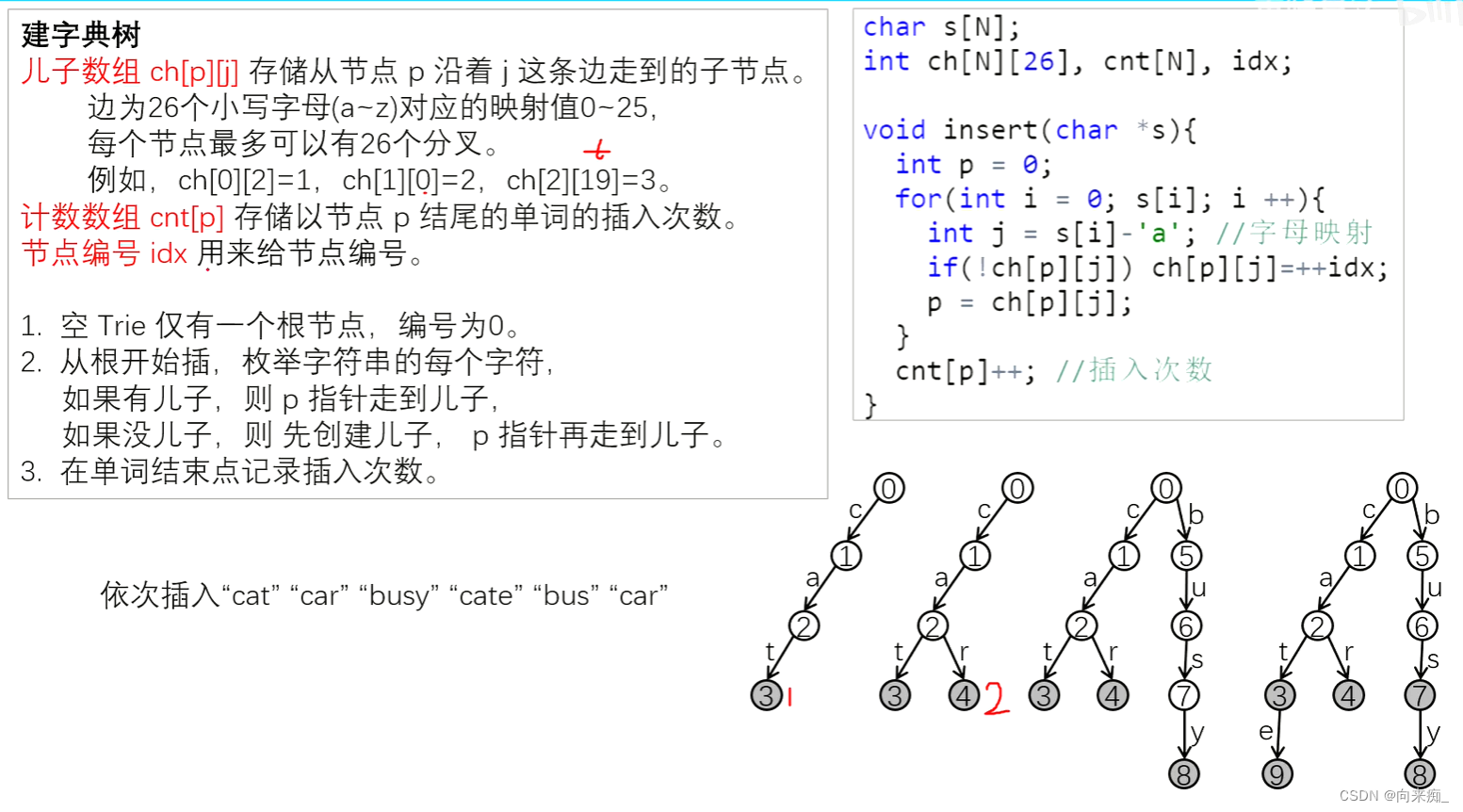
#include<bits/stdc++.h>
using namespace std;
const int N = 100010;
int son[N][26],cnt[N],idx = 1;
void insert(string s){
int p = 0;
for(int i=0;i<s.size();i++){
int u = s[i] - 'a';
if(!son[p][u]) son[p][u] = idx++;
p = son[p][u];
}
cnt[p]++;
}
int query(string s){
int p = 0;
for(int i=0;i<s.size();i++){
int u = s[i] - 'a';
if(!son[p][u]) return 0;
p = son[p][u];
}
return cnt[p];
}
int main(){
int n;
cin>>n;
while(n--){
char op;
string s;
cin>>op>>s;
if(op == 'I'){
insert(s);
}else cout<<query(s)<<endl;
}
return 0;
}
并查集
题目链接:836. 合并集合 - AcWing题库
思路:fa[i]表示i节点的父亲节点。开始时每个节点的父亲节点都是自己。
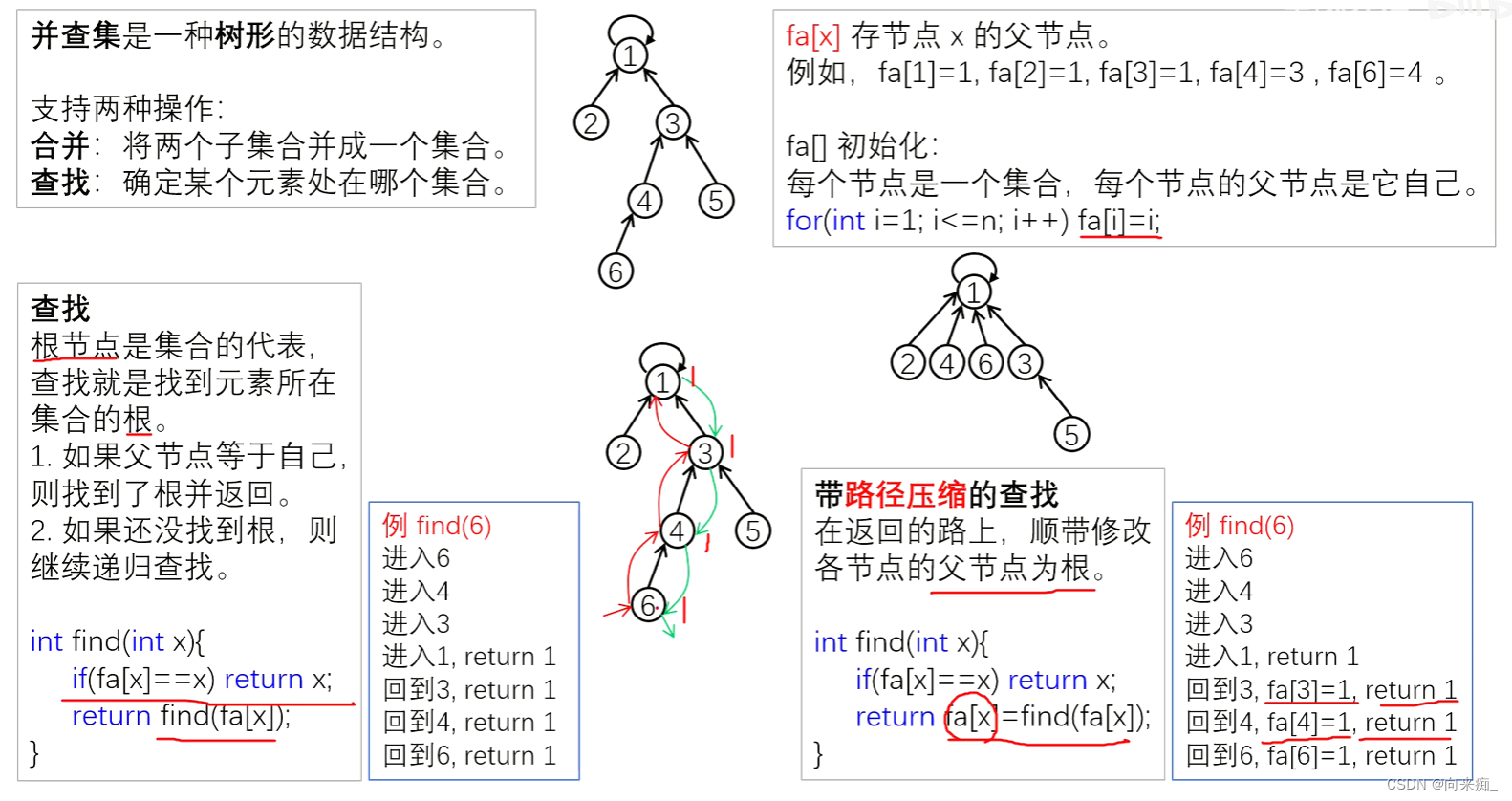
#include<bits/stdc++.h>
using namespace std;
const int N= 1e5+10;
int fa[N]; //下标表示当前点,数组值表示其父亲节点的下标
int find(int x){
if(fa[x] == x) return x;
return fa[x] = find(fa[x]);
}
void unionset(int x,int y){
fa[find(x)] = find(y);
}
int main(){
int n,m;
cin>>n>>m;
for(int i=1;i<=n;i++) fa[i] = i;
while(m--){
char op;
cin>>op;
int x,y;
cin>>x>>y;
if(op == 'M'){
unionset(x,y);
}else{
if(find(x) == find(y)) cout<<"Yes"<<endl;
else cout<<"No"<<endl;
}
}
return 0;
}堆
题目链接:838. 堆排序 - AcWing题库
思路:主要的操作包括up和down,up表示将节点上移,一般在新节点进入时使用,down表示将节点下移,一般在删除元素时使用。
需要注意的点在于一些小细节,例如递归边界,up和down都使用递归的形式,需要注意什么时候递归停止或是什么时候采用递归。
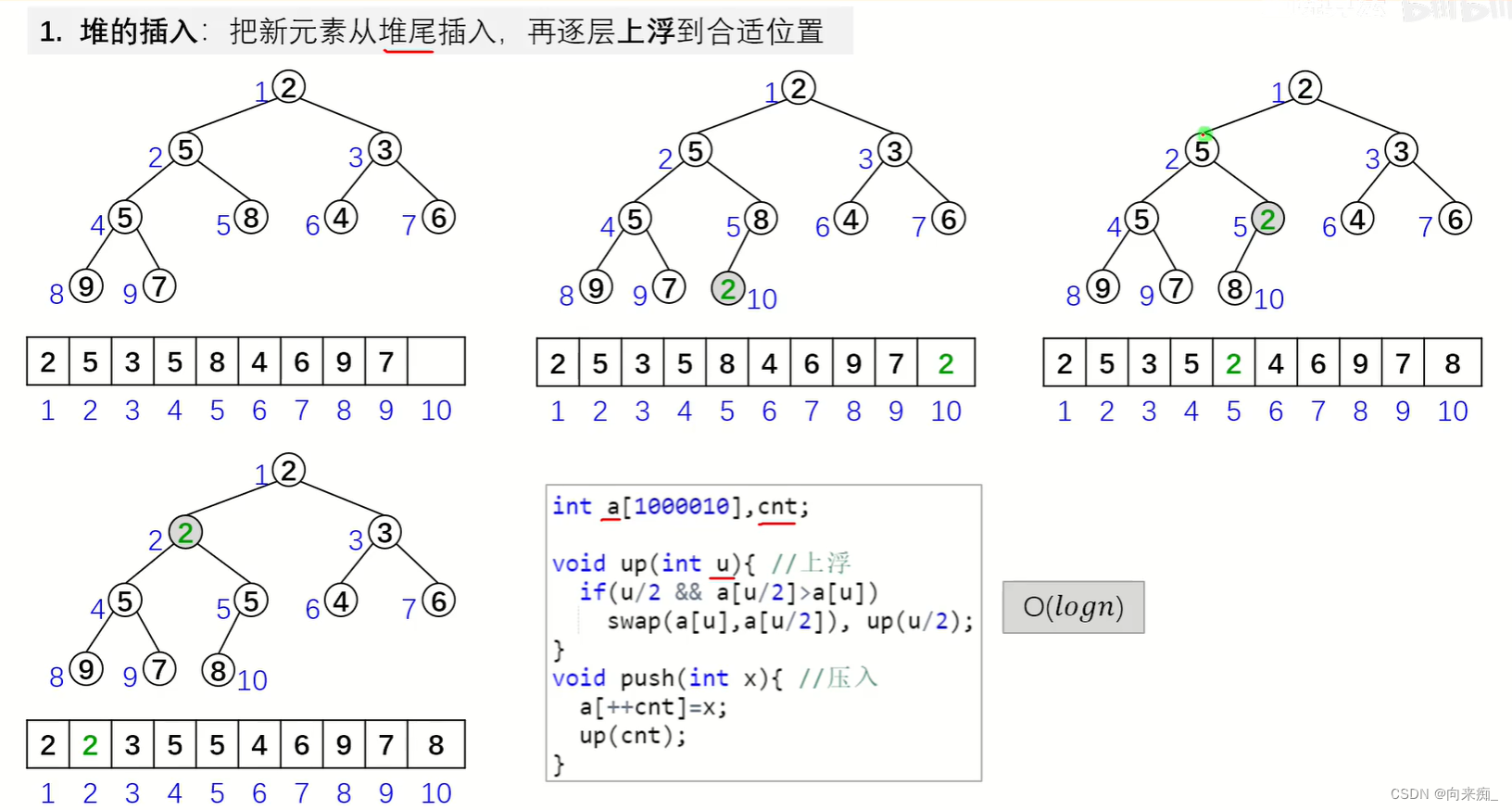
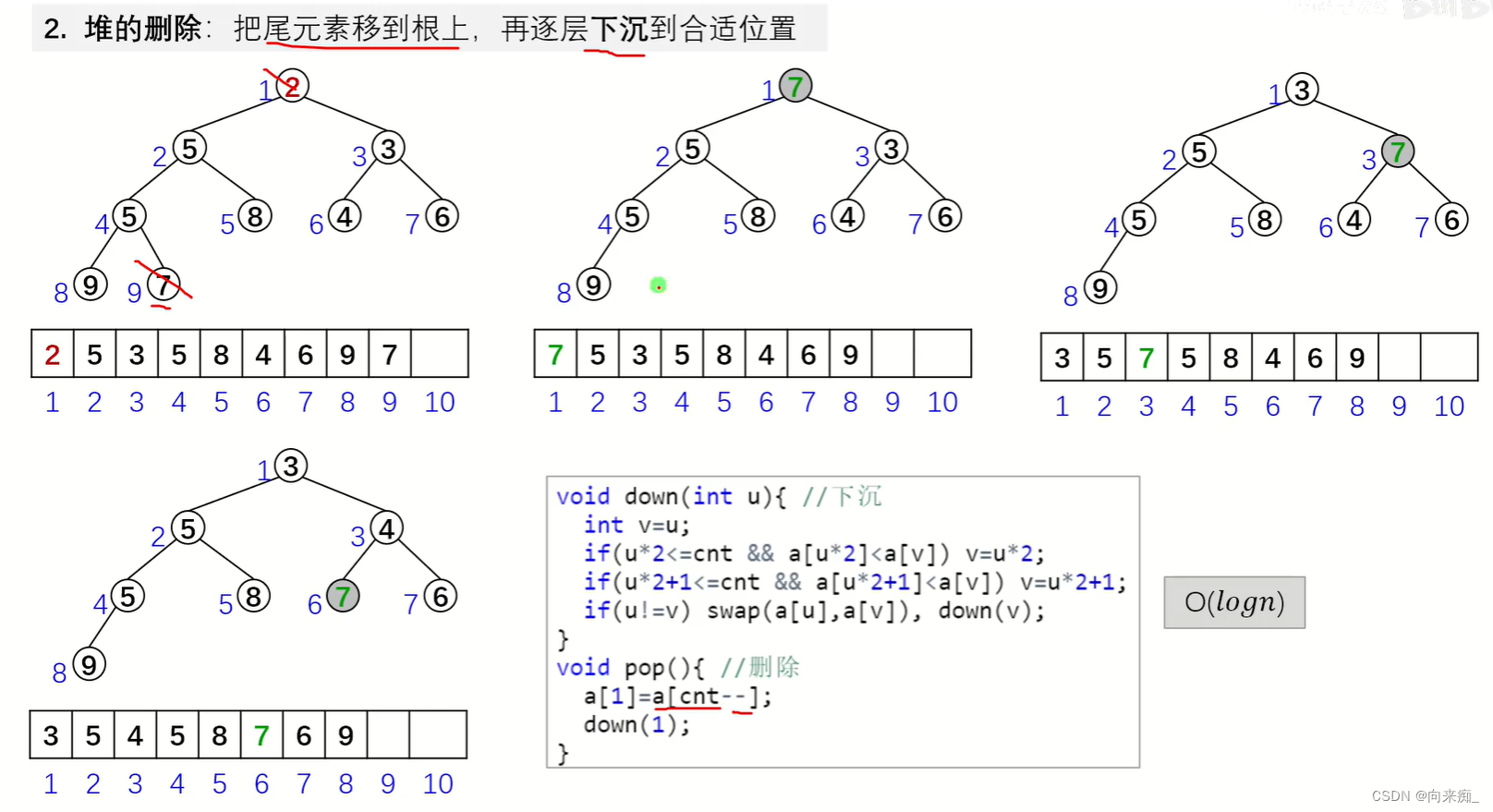
#include<bits/stdc++.h>
using namespace std;
const int N = 100010;
int a[N];
int cnt;
void up(int x){
if(x/2&&a[x]<a[x/2]){
swap(a[x],a[x/2]);
up(x/2);
}
}
void down(int x){
int u = x;
if(x*2<=cnt&&a[u]>a[x*2]) u = x*2;
if(x*2+1<=cnt&&a[u]>a[x*2+1]) u = x*2+1;
if(x!=u){
swap(a[x],a[u]);
down(u);
}
}
int main(){
int n,m;
cin>>n>>m;
for(int i=1;i<=n;i++) {
cin>>a[++cnt];
up(cnt);
}
// for(int i=1;i<=cnt;i++) cout<<a[i]<<" ";
// cout<<endl;
while(m--){
cout<<a[1]<<" ";
swap(a[1],a[cnt]);
cnt--;
down(1);
// for(int i=1;i<=cnt;i++) cout<<a[i]<<" ";
// cout<<endl;
}
return 0;
}哈希表
题目链接:841. 字符串哈希 - AcWing题库
思路:
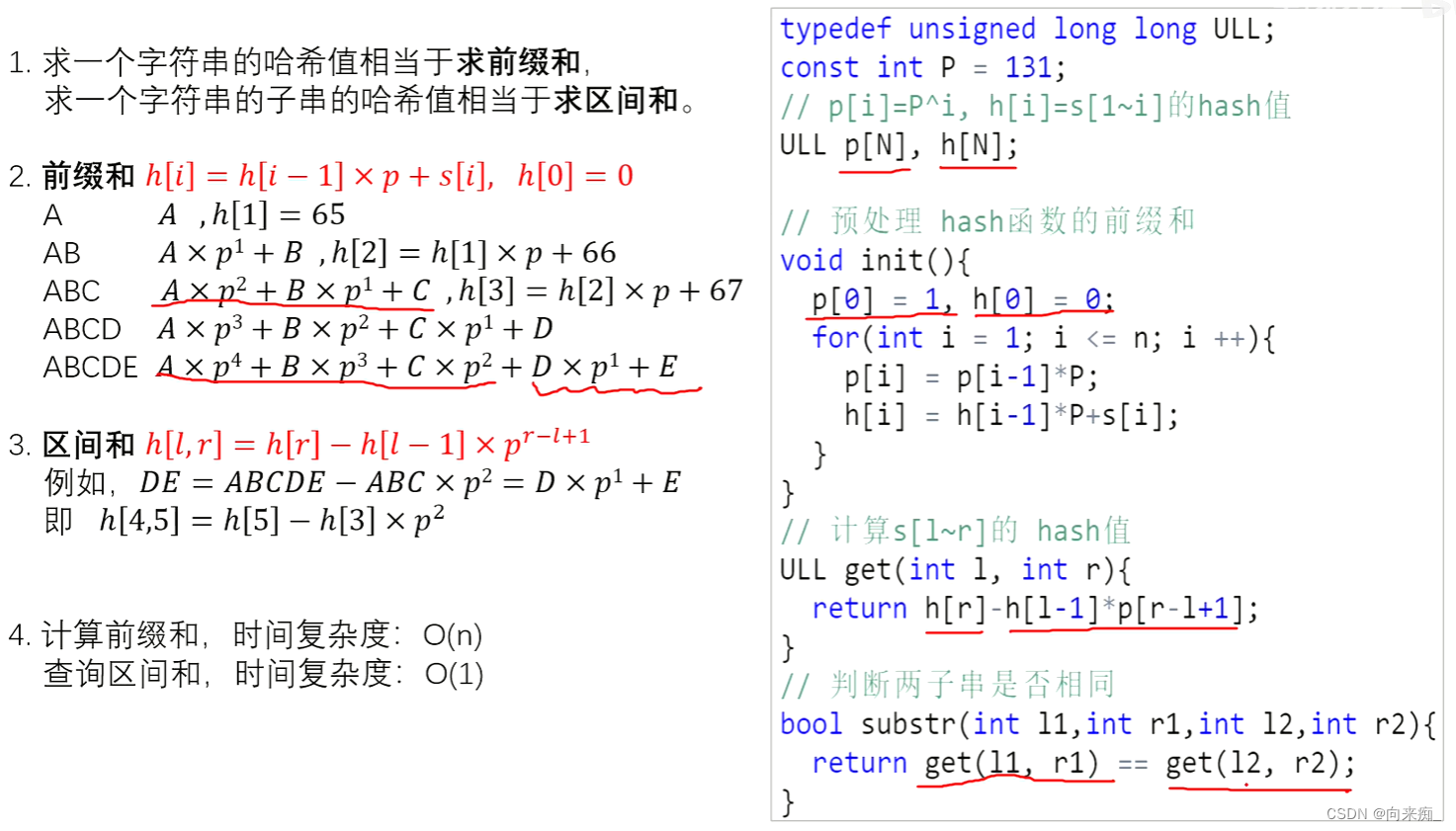
#include<bits/stdc++.h>
using namespace std;
const int N = 100010;
typedef unsigned long long ULL;
ULL h[N],p[N];
int P = 131;
ULL getSeg(int l,int r){
return h[r] - h[l-1] * p[r-l+1];
}
int main(){
int n,m;
cin>>n>>m;
char s[N];
cin>>s+1;
p[0] = 1;
for(int i=1;i<=n;i++){
h[i] = h[i-1]*P + s[i];
p[i] = p[i-1]*P;
}
while(m--){
int l1,l2,r1,r2;
cin>>l1>>r1>>l2>>r2;
if(getSeg(l1,r1) == getSeg(l2,r2)) cout<<"Yes"<<endl;
else cout<<"No"<<endl;
}
return 0;
}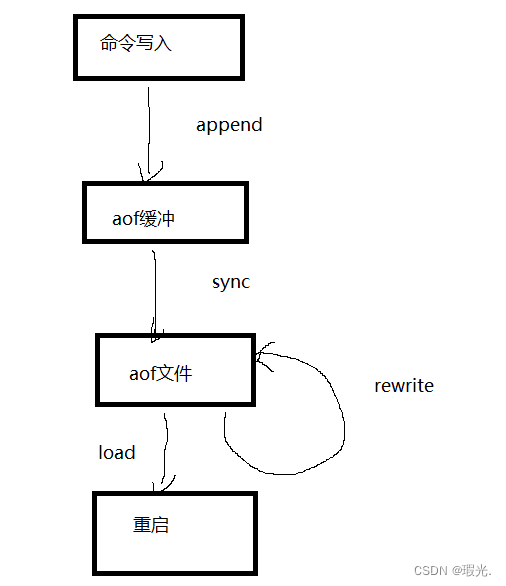
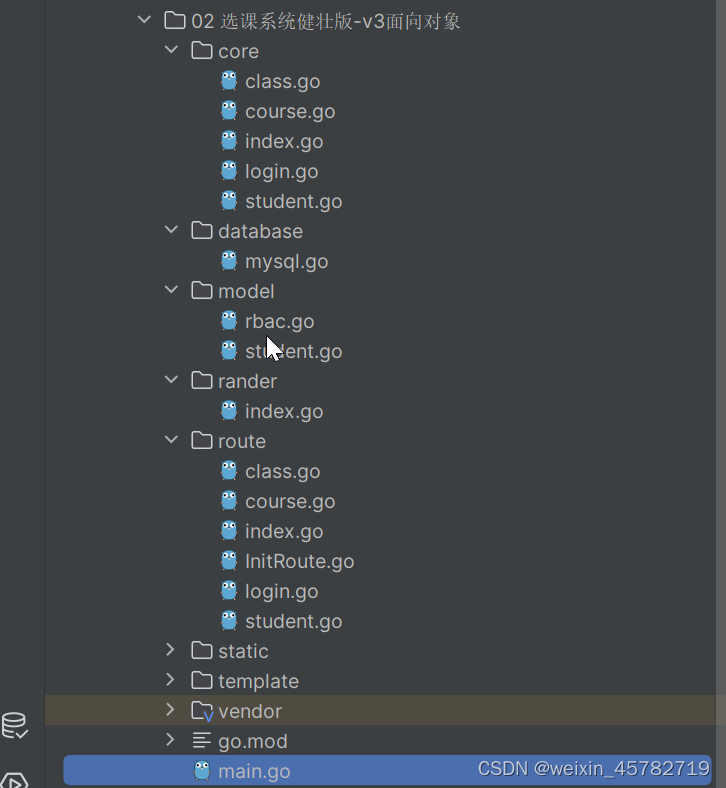


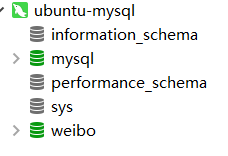


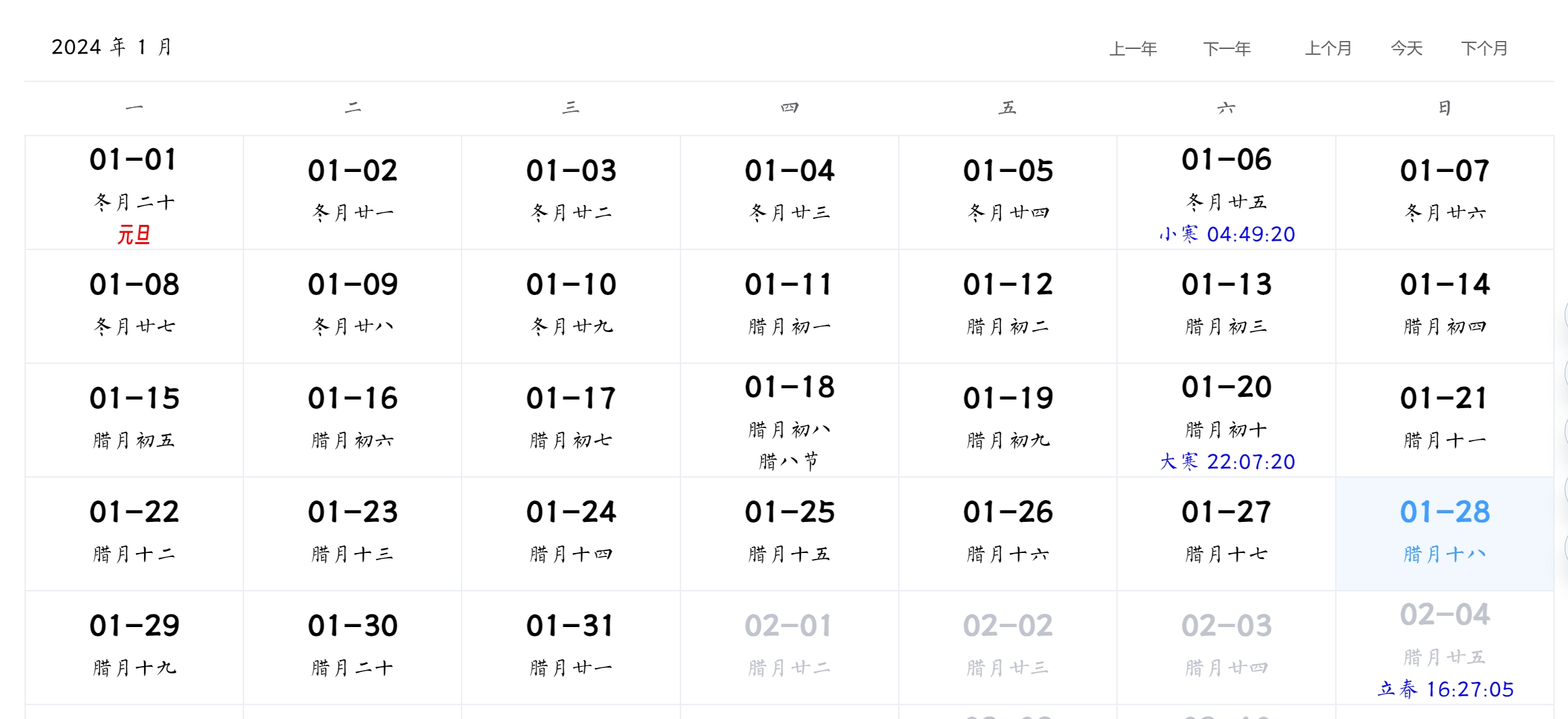
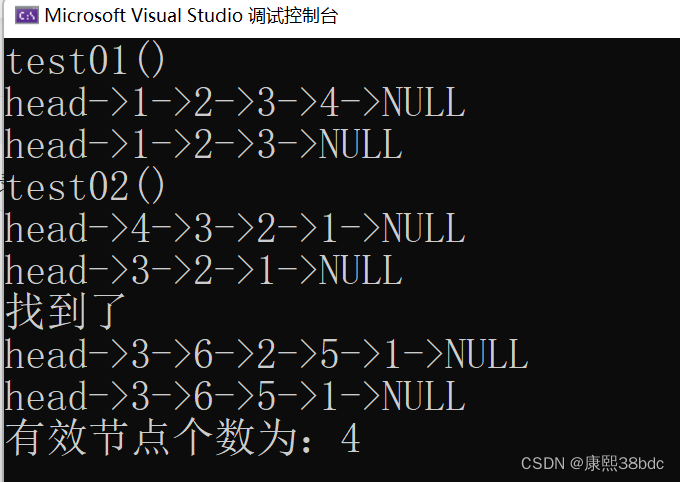
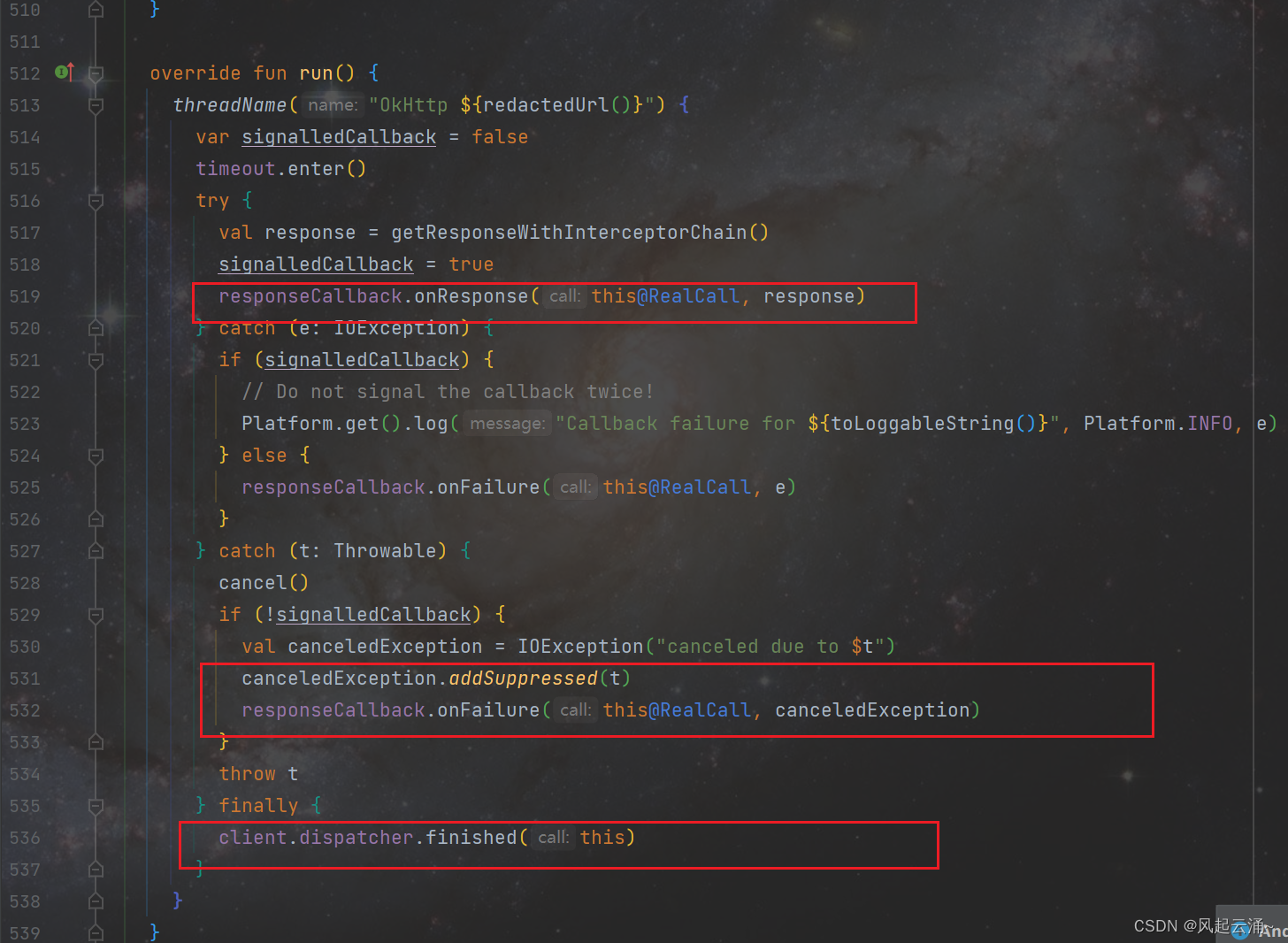
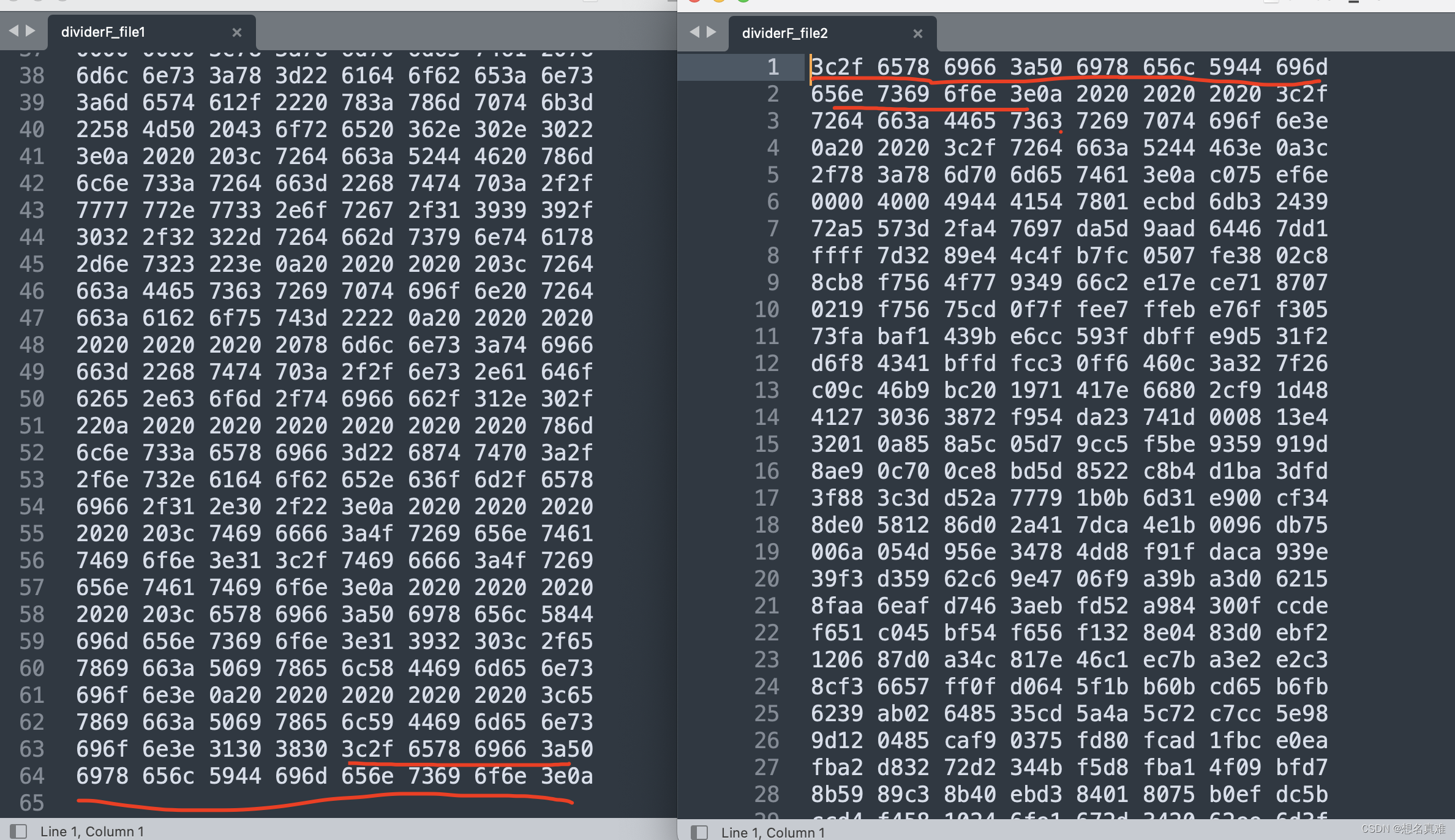

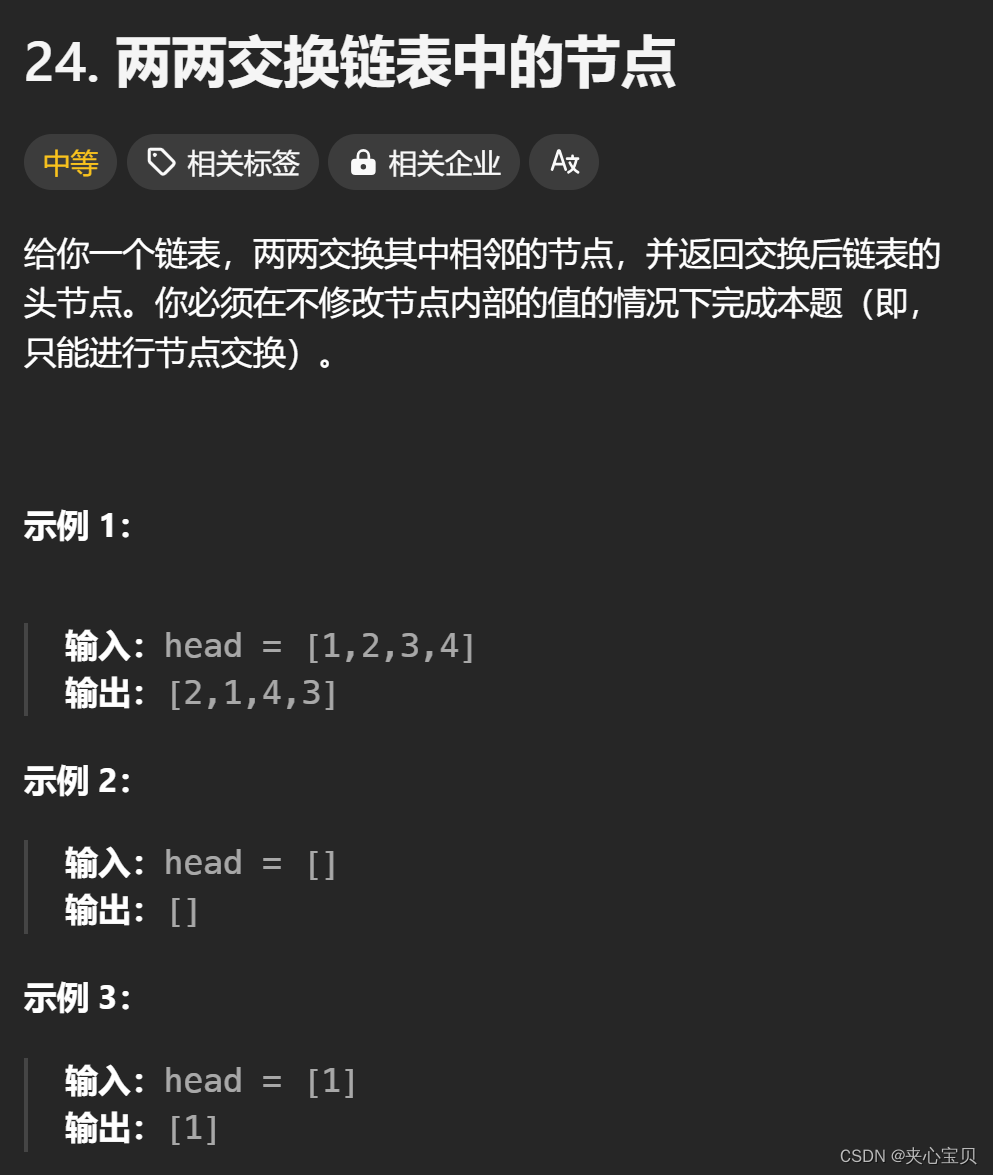

![洛谷 P2150 [NOI2015] 寿司晚宴](https://img-blog.csdnimg.cn/direct/ccda1f67c25f4003a4225a03414e03f9.png)

